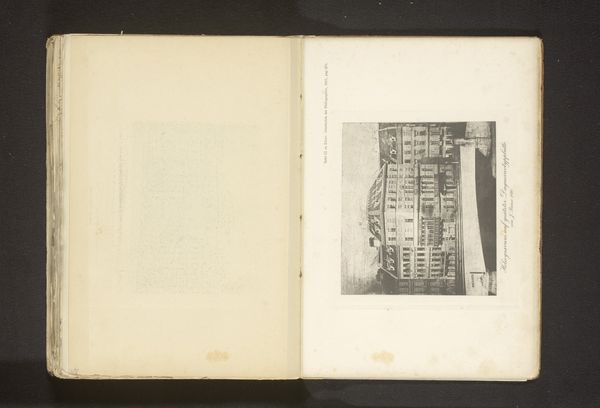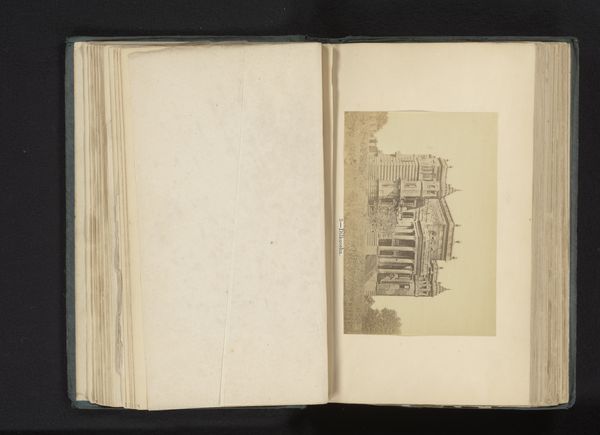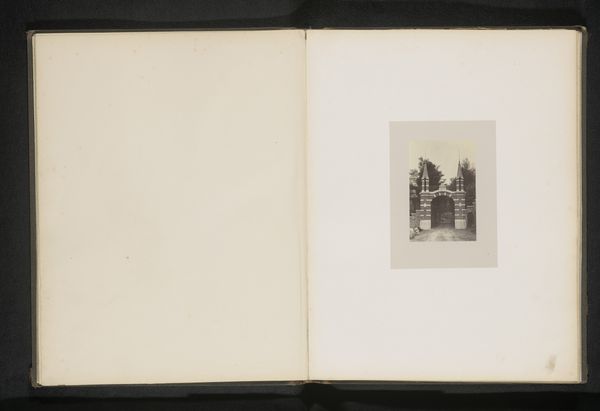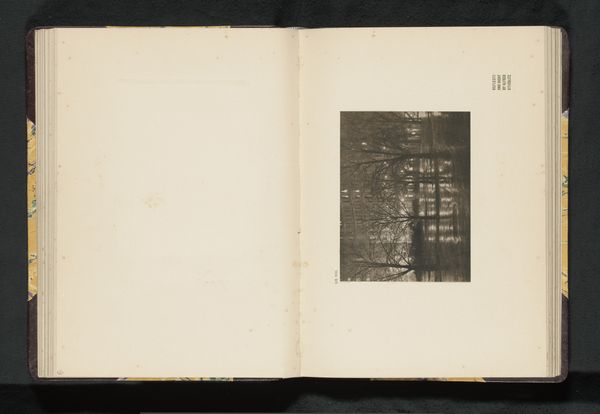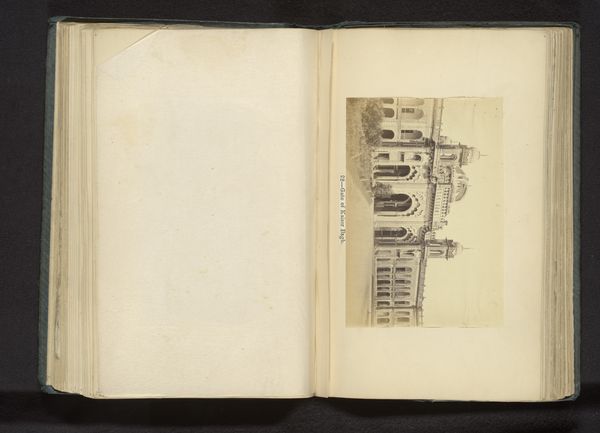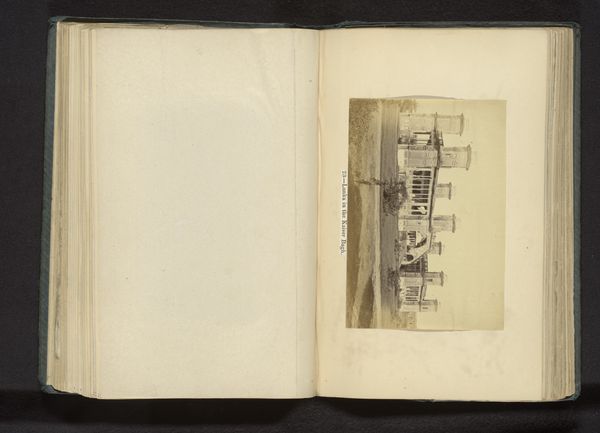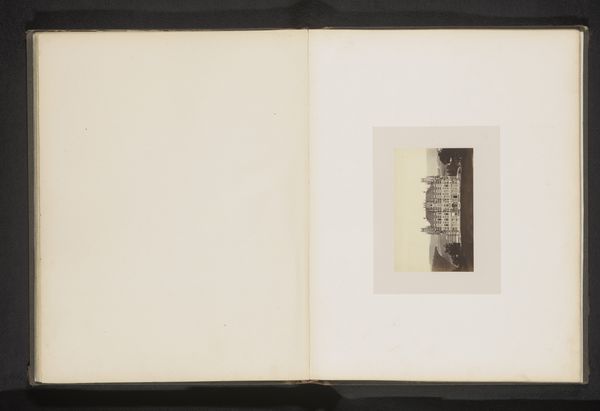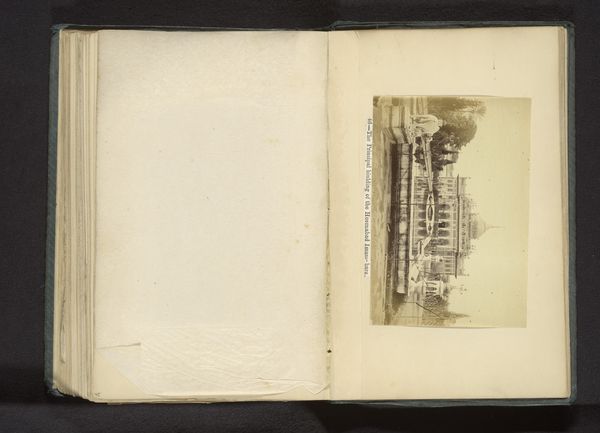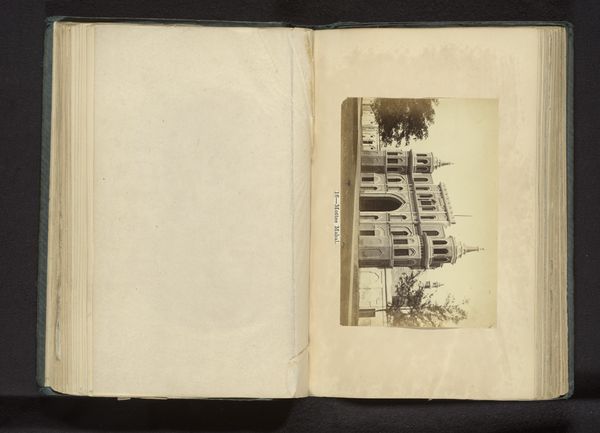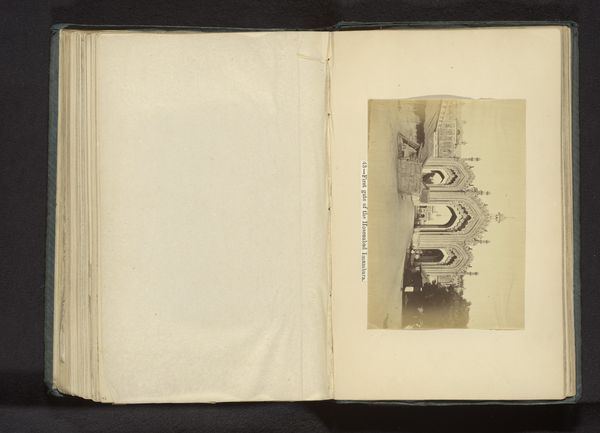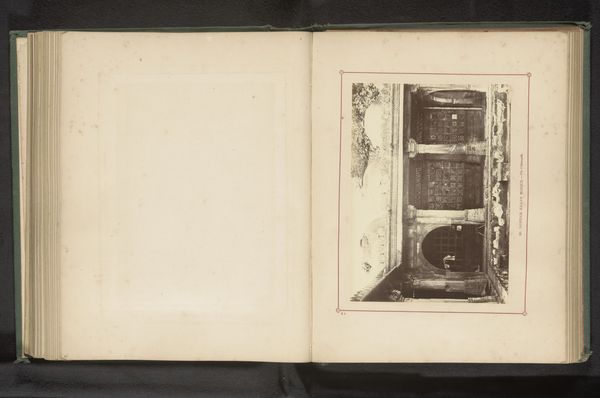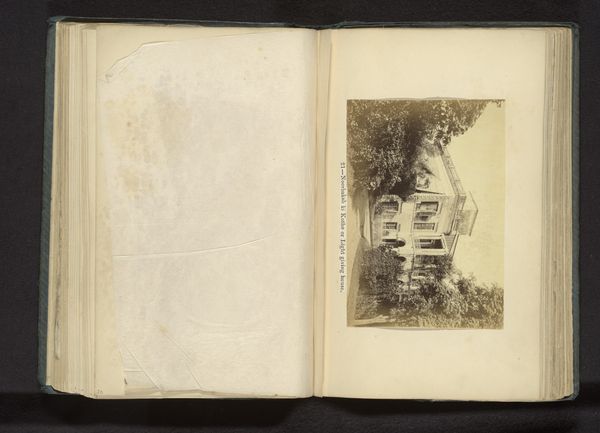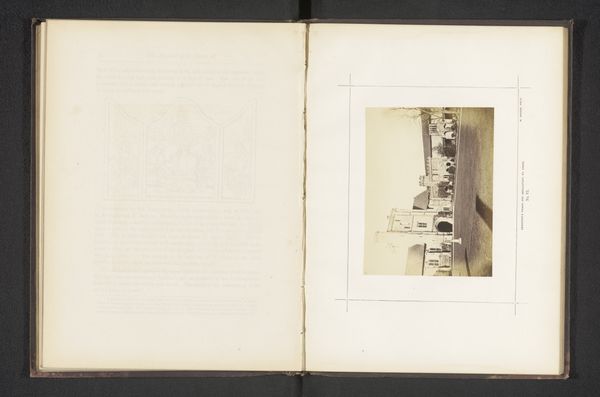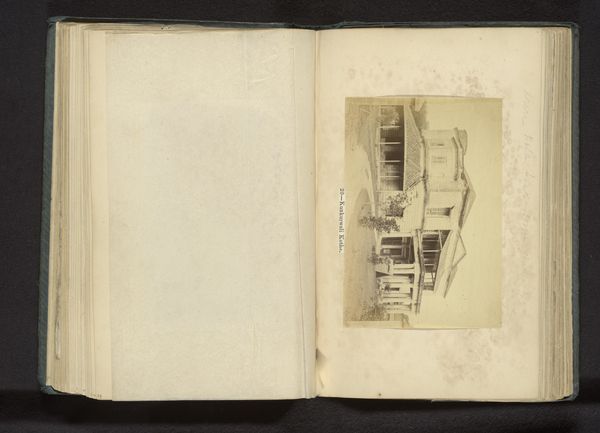
drawing, print, architecture
#
drawing
#
aged paper
#
homemade paper
#
paper non-digital material
#
paperlike
# print
#
asian-art
#
sketch book
#
landscape
#
perspective
#
paper texture
#
paper-based
#
folded paper
#
orientalism
#
paper medium
#
design on paper
#
architecture
Dimensions: height 105 mm, width 152 mm
Copyright: Rijks Museum: Open Domain
Curator: This drawing captures the Bibiapur Kothi in Lucknow, dating to before 1872 and created by Darogha Ubbas Alli. Its earth-toned hues are subtle. What stands out to you initially? Editor: The composition. The building depicted in the print is viewed at an oblique angle on the page. It evokes a certain stillness and isolation, emphasized by the aging of the paper itself. Curator: Absolutely. Alli, positioned as an artist operating under colonial influence, engages with the popular "picturesque" aesthetic of the time. These kinds of artworks promoted a romanticized view of Indian architecture and landscape. Editor: It feels important to situate the architectural portrait within a wider network of sociopolitical influence. Colonial administrators and wealthy patrons would have commissioned artwork for private documentation and displays. Curator: I think that's very insightful. The representation of local architecture as almost staged. Who controlled access to those structures at this time also mattered. This is more than just rendering the exterior. The access of indigenous artists complicates any binary framework of East/West, colonizer/colonized. Editor: Considering that, let’s ask how the drawing plays into those visual power structures. We are invited to appreciate the Bibiapur Kothi from a distance, like spectators of a controlled narrative. The composition does have certain distance to the architectural structure shown here. Curator: I see what you mean. This approach suggests it's less about showcasing an intimate understanding and more about reinforcing an image – or in this case, literally sketching one out, and in that sense inscribing it with the controlling authority. Editor: Indeed, this adds nuance to our interpretation. I’d love to contextualize that idea within postcolonial scholarship, because even within this static print lies tension—a visual push and pull. Curator: A valuable point that allows us to contemplate on how colonial influence could be subtle. This careful drawing reveals an exchange happening through artistic choices, which have historical consequences for all artistic forms of cultural exchange. Editor: Examining the piece with awareness about its political landscape invites a more robust interaction, and allows for diverse viewpoints.
Comments
No comments
Be the first to comment and join the conversation on the ultimate creative platform.
